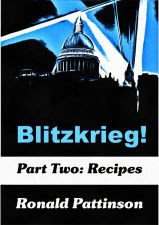I’ll make this clear from the start: this beer has no connection with modern 80/-. This is a Shilling Ale, the original type of Scottish Ale, more akin to an English Mild. While modern 80/- is a type of Pale Ale.
No complication in the grist, which is just 100% pale malt. Though there are two types of pale malt, 3.5 quarters from Scottish barley, 2 quarters from foreign. Which was a fairly typical mix. As the UK couldn’t grow enough malting barley to meet the needs of the brewing industry.
It was a similar story with hops, where imports were needed to match demand. That’s reflected in the hops used, where two-thirds are imported. There are equal quantities of Kent, Bavarian and Californian. Along with a quantity of spent hops. Even with those, the hopping rate is still a feeble 3 lbs per quarter (336 lbs) of malt. Which is mot much more than half of what you’d find in a London Mild Ale of the period.
No way this would have undergone any ageing. It’s far too lightly hopped.
| 1903 Binnie 80/- Ale | ||
| pale malt | 13.75 lb | 100.00% |
| Cluster 90 min | 0.50 oz | |
| Hallertau 60 min | 0.50 oz | |
| Fuggles 30 min | 0.50 oz | |
| Goldings dry hops | 0.25 oz | |
| OG | 1059 | |
| FG | 1020 | |
| ABV | 5.16 | |
| Apparent attenuation | 66.10% | |
| IBU | 20 | |
| SRM | 5 | |
| Mash at | 154º F | |
| Sparge at | 175º F | |
| Boil time | 90 minutes | |
| pitching temp | 62º F | |
| Yeast | WLP028 Edinburgh Ale | |












































































2 comments:
This is a Shilling Ale, the original type of Scottish Ale, more akin to an English Mild.
Although by 'Mild' you don't mean anything we'd currently recognise as 'mild'.
While modern 80/- is a type of Pale Ale.
...and by 'Pale Ale' you don't mean anything we'd currently recognise as 'pale ale' (unless modern 80/-s have changed a lot since last I had one).
I wonder what it would taste like to a modern drinker. 5%, pale malt, highly hopped, only 60+% attenuation – somewhere in the Jaipur region, or more like Wobbly Bob?
A 19th-century English Mild, is what I meant.
Yep, 60/-, 70/- and 80/- are types of Pale Ale. That's what they were called by the Scottish brewers that made them. They may not fit in with your definition of Pale Ale, but that doesn't make them any the less types of Pale Ale.
It seems like you have a very narrow definition of Pale Ale. I would class all Bitters as Pale Ales. And Irish Red Ales, for that matter.
Post a Comment